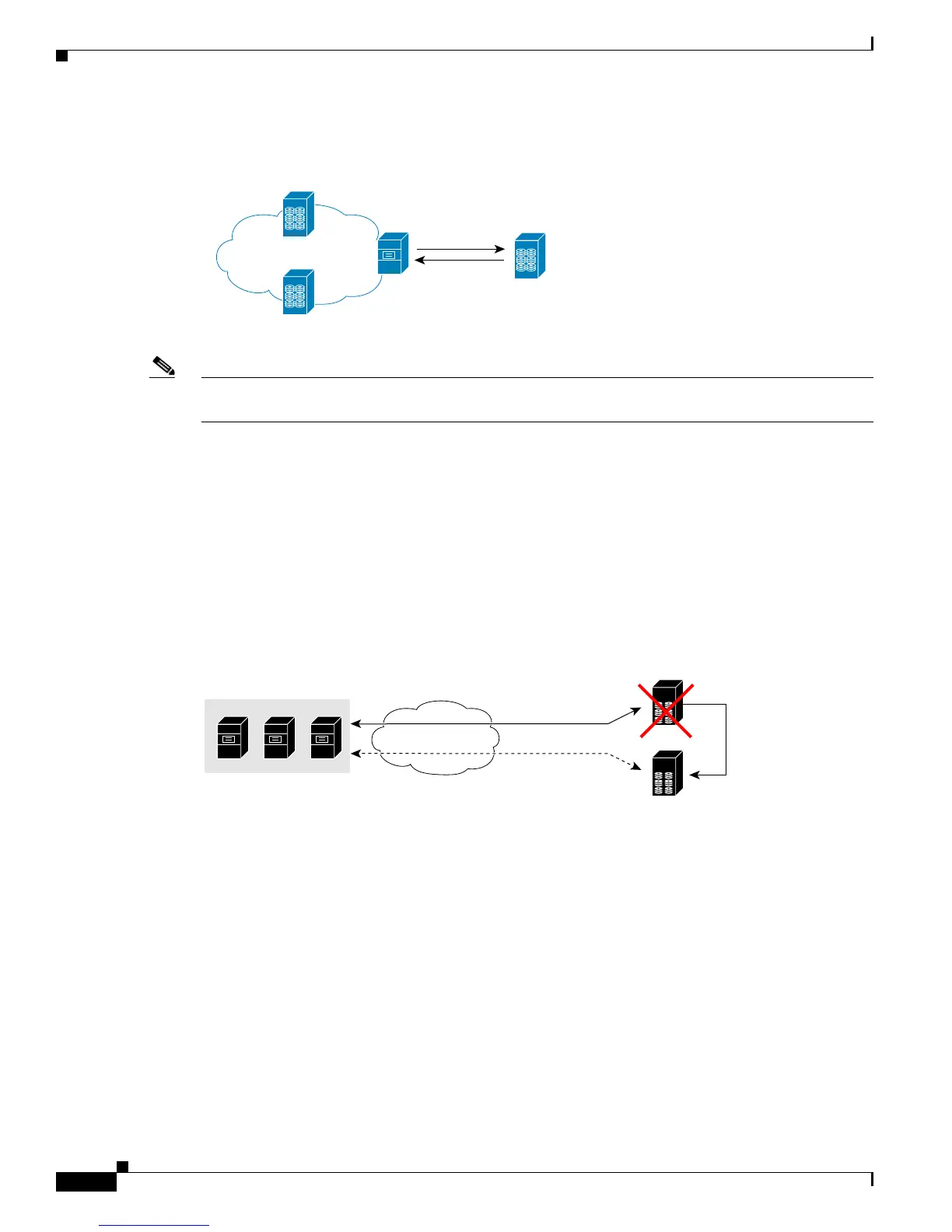Send documentation comments to mdsfeedback-doc@cisco.com
27-2
Cisco MDS 9000 Family Fabric Manager Configuration Guide
OL-17256-03, Cisco MDS NX-OS Release 4.x
Chapter 27 SAN Device Virtualization
About SDV
Figure 27-2 Initiator Virtualization
Note While most of the examples in this chapter describe target virtualization, the initiator virtualization
functions similarly.
Typically, today’s deployments for handling device failures are designed for high availability (HA), with
redundancy being a key part of this design. Consider the situation where a target is designed to be
redundant. Two arrays are deployed–a primary and secondary in this situation. Enterprises often use
some type of consistency technology (such as EMF SRDF) between the primary and secondary arrays
to ensure that the secondary is a mirrored copy of the production LUN. However, if the primary array
fails, it must be replaced by the secondary because all I/O must occur on the secondary array. Problems
can occur because the time required to bring the secondary array up and have it working often takes
longer than most can afford (Figure 27-3 illustrates this dilemma).
Figure 27-3 Typical Deployment for Handling Device Failures Before SDV
If a storage array is replaced without using Cisco SDV, then it may require the following actions:
• Taking down a server to modify zoning and account for the new array.
• Changing the Cisco NX-OS configuration to accommodate Fibre Channel IDs (FC IDs) and
pWWNs of the new array.
• Changing a server configuration to accommodate the new FC IDs and pWWNs.
More specifically, without SDV you might experience the following conditions:
• It can take a considerable amount of time to configure a secondary device for a typical production
environment.
• In the zoning configuration, all the initiators must be rezoned with the secondary device, and certain
initiators must also be reconfigured. For example, the WWN and FC ID of the secondary device are
different, so driver files must be changed and the server must be rebooted.
Virtual
initiator
Traffic from
server
183018
Primary
initiator
Secondary
initiator
Asychronous
Replication
Secondary
Device
Primary
Device
SAN
I/O - Normal
I/O - After primary
failure
182097
Servers

